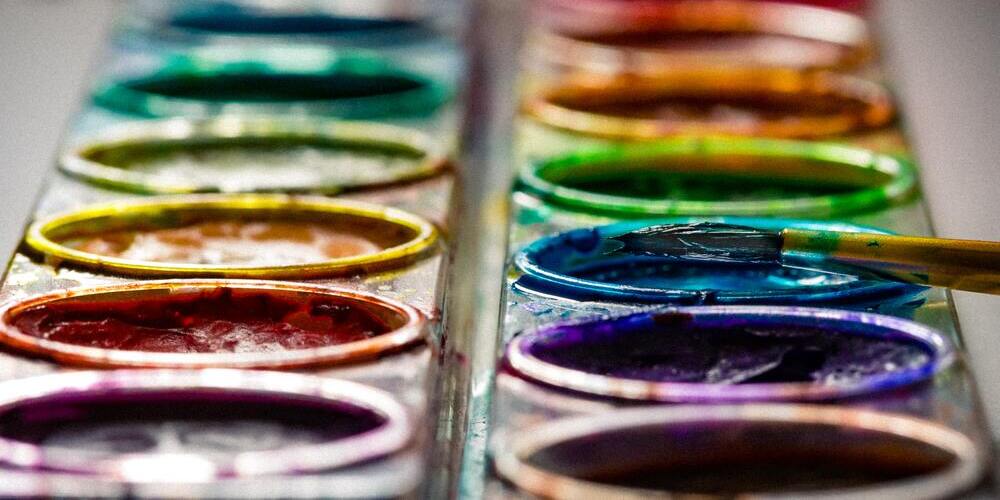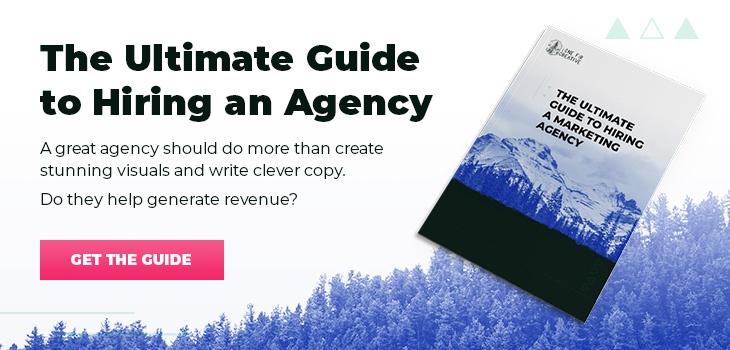Do you remember a few years ago when all the board game companies started releasing new editions of their classic products like Yahtzee and Clue? All of the main components were the same—six dice, six characters, one candlestick—but the fonts had been updated, the visual elements remastered and the whole feel of the game was modernized.
Why would they do that? Because their games were starting to feel out of date — AKA, irrelevant. Clue was first released in the early ’40s and Yahtzee in the mid-’50s, and as time has gone on they’ve continued to update their look to fit with the times and better connect with their target audience.
If you’ve considered updating your brand but feel conflicted on whether it’s worth it, then this is the article for you. We’ll walk through all the basics of a brand refresh, including how it’s different from a rebrand, and help you identify when you might need one.
How We Define a Brand Refresh
If you’ve been around our brand for a while, you’ve probably noticed some changes on our website. We switched up our typography and our color palette — dropping in a slick hot pink color, I might add — ultimately redesigning our entire website to reflect our updated brand.
Our new website is a prime example of a brand refresh. We changed many visual elements, but the core of our brand — our vision and goals — stayed the same. This is what makes refreshing different from rebranding. In a rebrand, your entire brand identity changes; your business model, brand positioning and complete visual identity are reconsidered and remade into something new. Even the name of the company may change. A brand refresh isn’t quite so dramatic. More like a makeover than it’s like burning off your fingerprints, moving to Hawaii and assuming a new life as a pineapple farmer.
Despite it being the less dramatic choice for your brand, a refresh still gives you opportunities to update some core areas like messaging and brand positioning. We live in a fast-paced world where things are constantly changing, including how customers relate to your product. With a refresh, you can adjust your brand to the changes in language and ideas around your products to stay connected to your customer base.
That being said, I’m a designer. During a refresh, I tend to focus on the more visual elements of a brand. This could include modernizing your logo design, typography and color palette. Please note, this does not mean creating a completely new logo, per se, but instead updating it to look more in line with current graphic design trends.
As for your colors, you can simplify, expand or just change as needed. If you had too many colors making your website look like a psychedelic dance club, then you might consider paring down to just two or three. Inversely, if you had colors like varying shades of beige that didn’t engage users or highlight key areas of your site, then you might want to consider spicing things up.
For example, our website used to be a fairly monochromatic selection of greys, greens and whites. While this served our needs for a time, we decided we wanted a little more oomph and a little more wow! We added in a few new accent colors to help highlight key information on our website and provide more visual interest and less sameness. We also added in a new set of illustrations and accent graphics to complete our new look. Yet we held onto some of what visually makes us Lone Fir — our logo and our love of green colors.
So at a cursory glance, it might look like a whole new brand, but it’s really the same old Lone Fir in a snazzier suit.
When You Need a Brand Refresh
We didn’t just up and decide one day that we needed a brand refresh. That would have been a pretty tough pitch to Tyler, our CEO. No, we decided to refresh our brand for a bunch of reasons, one of them being that the definition of our target audience was rapidly evolving and our brand’s look and feel no longer aligned with the kinds of clients we wanted to bring in.
For a refresh to be successful, you need to be addressing some change in your brand or market. Things like:
- Your audience. Maybe you’re trying to reach new customers or your target audience just isn’t responding like they used to. You might need a brand refresh to recapture the attention of your customers or connect with the new audience you’re trying to reach.
- The structure of your company. Businesses grow and change over time, and sometimes the best way to address a major change in your company is with a refresh. You might want to reposition the focus of your brand on the stakeholders more than executives if you’ve shifted who holds the power or simply highlight a new style of leadership through your web design.
- An aged brand image. Your logo is typically where people first look to get a feeling of your brand image, so it needs to make you stand out. Design trends change frequently, though, so the logo that made you cutting edge five years ago might not cut it anymore.
Of course, there are other reasons to go forth and refresh, but they all pivot around this central idea that it’s only necessary if you’re addressing a change in your business. So before you start changing colors and adding graphics, think to yourself: “What will this refresh accomplish?”
Brand Refresh Pitfalls
Like all marketing strategies, brand refreshing is a double-edged sword. When done right, you can see amazing results. When done wrong, you’ve wasted time and money. I don’t want you wasting either of those, so let me share a few common ways people bungle their refresh.
First and foremost is your audience. Every successful brand has a firm grip on who their audience is and what they want, and it’s imperative that the audience is considered when embarking on a brand refresh. Whether it’s millennials, baby boomers or Gen Z, there are two questions you should ask before the rollout of a refresh:
- Will the change be jarring to my audience?
- Will the new brand resonate with them?
You want the shift from old to new to be as seamless as possible, especially if your brand has been around for a while. Customers know what to expect from you, so the new design should keep to those same guidelines and still feel familiar to them, all while making everything feel pleasantly new.
The second most common pitfall goes hand-in-hand with the previous section. You must have a reason to refresh your brand. Maybe you’re trying to reach a new market or pivot to showcase a new product. Maybe you did a brand audit or competitive analysis and saw you weren’t performing as well as you’d hoped. Whatever your reason, it needs to address a change in your brand or market and warrant redesigning your look.
The brand refresh process takes a significant investment of time and money, so you want to make sure you get it right. Once you’ve decided the reason for the refresh, develop a plan of what elements you’ll change and how to address that reason. This can help you create a sort of roadmap to follow as the project moves forward to ensure you’re spending resources in appropriate areas
A Successful Brand Refresh
Now that you know what not to do, let me lay down a list of things you absolutely should do when embarking on a brand refresh.
- Know your audience. It may seem like I’ve said this a million times already, but that’s because it’s important. You need to know how your audience receives information and what message you want to communicate. After all, a brand refresh is all about them, not you.
- Check out your competitors. What do their marketing materials look like? How do they engage with customers on social media? What tweaks have they made to their brand lately? After you evaluate how well your competitors are performing, find areas where you can top them. Maybe your site has the potential to be more engaging or your Instagram posts could have better graphics. You can use these topics as goals for your brand refresh.
- Evaluate your color palette. Colors dictate a whole lot more of the web experience than many people realize. For this reason, think over the color palette you currently have in use and see if it needs to be simplified or broadened. A good rule of thumb is to keep three to four core colors for your site that combine nicely for a cohesive look.
- Create brand guidelines. It’s hard to create a comprehensive brand strategy if you don’t have any rules to follow. It’s even harder to overhaul your image. For this reason, I highly recommend creating brand guidelines that dictate exactly how all of your materials and assets are created. This can help you create a cohesive design that’s not only visually pleasing but is also logical and easy to understand from a user standpoint.
Launching Your Brand Refresh
Once you’ve put all that hard work into identifying necessary changes, considering your audience, researching competitors and implementing the whole refresh enchilada, it’s time to launch.
Before you hit that big red button, though, you want to make sure all of your branded materials are in line. Have you developed a plan for updating your social media? Your newsletters? Your tagline? Your email marketing design? A refresh reaches much further than just your website because you want to make sure you have that continuity of design across all channels that represent your brand. And don’t forget those directory lists and all that swag you send out. They need a refresh too!
Once you’ve updated all your materials, you still can’t just hit a button, change your entire website and expect your customers to be okay with that. Talk about jarring! You want to prepare them for the change by releasing some teasers or hints that something big is coming. You can do this on social media with posts that feature your new colors, fonts or logo. You can do this through newsletters that highlight why you’re refreshing and how it will affect customers. You can even combine the two approaches in your email marketing campaigns.
The point is, you want to plan your rollout just as much as you did the refresh. Give your audience a hint that something is coming so they’re prepared, then when you have everything redesigned and looking nice and new, hit that big red button.
? Also check out what makes up a great marketing message in The Anatomy of a Winning Marketing Message.



